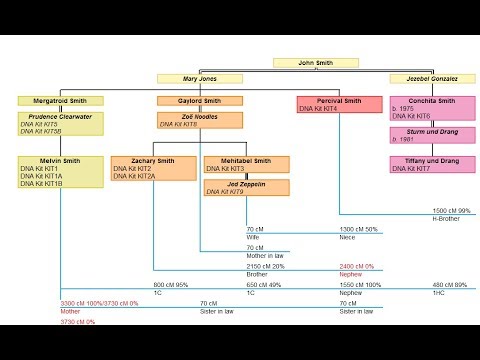Contents:


In case it is used for a https://1investing.in/nger period, the portion of the amount that is received within that year is classified as a current asset and the rest is classified as a non-current asset. Also, notes receivable are transferable i.e. its ownership can be transferred and the new bearer shall have the claim to note post the ownership transfer. According to the accounting principles, a contra accounts receivable account known as “allowance for doubtful accounts account” is maintained in the books of business.

Analyzing your accounts receivable involves calculating your Days Sales Outstanding ratio, or DSO. This ratio represents the average amount of time it takes you to collect payment. In some cases — such as with expensive equipment purchases from vendors — you may record a note payable instead of an account payable. The current ratio is a liquidity ratio that measures a company’s ability to cover its short-term obligations with its current assets.
straight line depreciation typically expect to close both APs and ARs within several days to several months. To do so efficiently and on-time, more and more businesses choose to implement automation tools. Dedicated software helps streamline the processes within AP and AR departments to drive cost-efficiency, avoid mistakes, and enable scalability. Debits $500 for an account receivable – because they expect a payment of $500 from the buyer for the purchased equipment. Companies need to understand how much money they need to pay to their suppliers and how much money customers owe in order to effectively regulate the amount of cash available for production and business development. The company’s management can increase cash reserves by extending AP repayment periods.
It is possible to combine the previous two entries by debiting Notes Receivable and crediting Sales. In some cases, the term of the note is expressed in days, and the exact number of days should be used in the interest computation. In this example, interest is based on the fact that the note has been outstanding for 62 days. Together, the principal and interest portions represent the note’s maturity value. Explain some of the accounting similarities and differences between not-for-profit organizations and for-profit businesses.
Possible Risks of Accounts Payable
Unpaid invoices will be recorded in the accounts receivables section of the balance sheet while the companies wait for payment for the utilities delivered. Receivables are unpaid customer debt for products or services delivered. It is a current asset that affects a business’s liquidity and working capital management. Receivables are shown as current assets on the balance sheet, and the general ledger shows a debit balance. According to the rules stated above, all accounts that contain a debit balance will increase when a debit entry is added to them and will decrease when a credit entry is added to them.
Veteran Broker Suspended over His Own Private Investments – Financial Advisor IQ
Veteran Broker Suspended over His Own Private Investments.
Posted: Wed, 05 Apr 2023 12:34:14 GMT [source]
Collecting all unpaid dues should be a top priority to have a better cash flow. Failure to do so will negatively affect the cash flow available for other business needs. Receivable entries are beneficial to businesses and their clients because they allow businesses to maintain a steady supply of products. The relationship between the business owner and the account holder can be documented using various receivable entries.
Her expertise lies in marketing, economics, finance, biology, and literature. She enjoys writing in these fields to educate and share her wealth of knowledge and experience. The costs of the copyright should be allocated to the years in which the benefits are expected to be received. Payments refer to a business paying another business for receiving goods or services.
What is the difference between Accounts Receivable and Notes Receivable?
A note receivable is a written promise to receive a specific amount of cash from another party on one or more future dates. Overdue accounts receivable are sometimes converted into notes receivable, thereby giving the debtor more time to pay, while also sometimes including a personal guarantee by the owner of the debtor. Notes receivable appear on the balance sheet as an asset with a corresponding liability. The amount of any principal or interest payments received on the note will be recorded as cash inflows in the statement of cash flows. Notes receivable are generally considered to be an asset on a company’s balance sheet.
- If Butchko anticipated difficulty collecting the receivable, appropriate allowances would be established in a fashion similar to those illustrated earlier in the chapter.
- However, for long-term notes receivable, interest that remains unpaid is typically added to the principal amount and compounded for interest that’s carried over from one year to the next.
- When revenue and expenses are balanced, the company can plan and strategize with both feet on the ground, seize growth opportunities, and build quality relationships with business partners.
- Although it may seem peculiar to record interest revenue on defaulted notes receivable, the Zoe Company is still obligated to pay both the interest and the principal.
The principle of the note and that is the base amount promised to be paid. The note will likely also identify an amount of interest to be paid along with the principal. The interest is the amount charged for lending the money until it is repaid.
What Accounts Receivable (AR) Are and How Businesses Use Them, with Examples
When a business has a claim against a customer for a short-term extension of credit, they create a receivable entry in its accounting system and send an invoice to the client to request payment. Notes receivable is an asset and as such would be recorded as a debit and not a credit. The principal part of a note receivable that is expected to be collected within one year of the balance sheet date should be reported in the current asset section of the note holder’s balance sheet. While the remaining principal part of the note receivable should be reported in the non-current asset section as Investments. Other receivables can be divided according to whether they are expected to be received within the current accounting period or 12 months , or received greater than 12 months (non-current receivables) .
- Accounts and Notes Receivable Trade accounts receivable for the nightclub operation is primarily comprised of credit card charges, which are generally converted to cash in two to five days after a purchase is made.
- Both represent the amount of money customers owe a business for the goods or services they’ve received.
- Analyzing your accounts receivable involves calculating your Days Sales Outstanding ratio, or DSO.
- Upon approval, the $7,000 is deposited into the business’s checking account the next day and then Square charges 9% of the business’s credit card sales each day until the $7,910 is fully paid.
Each note receivable is unique, which can challenge manual bookkeeping. Precoro Blog is where Finance and Procurement professionals get advice, tips and news to streamline the business purchasing process. Automation software helps AP teams recognize fraudulent invoices, assign responsibilities clearly across the team, and build an efficient and cost-effective procure-to-pay process that enables short DPO. The trade note’s status always indicates the last step performed on the trade note. Before calculating DSO, you need to know your cost of goods sold, or COGS. COGS is calculated by adding total inventory purchases to the amount of inventory you had at the beginning of the period, then subtracting your inventory amount at the end of the period.
Notes receivable are useful asset accounts for businesses to understand. They play a part in increasing collectability of amounts owed, plus they generate revenue in the form of interest. Accounting for notes receivable can be burdensome and error-prone if approached manually. Since it’s a common practice to deliver goods and provide services before receiving payments for them, there’s also, unfortunately, a risk that payments will never be received. When it becomes apparent that the buyer won’t pay an account, it has to be written off as a bad debt expense.

Others note that with a purchased intangible, a reliable number for the cost of the intangible can be determined. Notes Receivable 18,000Interest Revenue 675To record dishonor of Price Company note. “On July 18, 2015, I promise to pay…” When the maturity date is designated, computing the maturity date is not necessary. Our writing and editorial staff are a team of experts holding advanced financial designations and have written for most major financial media publications.
Other Receivables
Notes receivable are debts that are due to the business from its customers. These can include promissory notes, open accounts or any other types of trade receivables. Notes receivable are usually recorded on the balance sheet as assets and are marked down to their present value. A note receivable is an asset account tied to an underlying promissory note, which details in writing the payment terms for a purchase between a “payee” and the “maker” of the note . Most often, it comes about when a maker needs more time to pay for a sale than the standard billing terms.
Receivables can be classified as accounts receivables, trade debtors, bills receivable, and other receivables. Note that the calculation omits inventory and a different version of the formula involves subtracting inventory from current assets and dividing by current liabilities. The numerator of the ratio includes “quick assets,” such as cash, cash equivalents, marketable securities, and accounts receivable. When a sale is made on account, revenue is recorded along with account receivable.
LiveFlow has easy-to-use templates which can save you time and the platform offers numerous tools that can help you automate even the most complex financial accounting processes. A note receivable is commonly requested in exchange for the goods bought or money and tends to stretch beyond one operating cycle. The amount in case of notes receivable is much higher than receivable, it stretches longer as a result of the interest component. Unlike Accounts Receivable which is an informal agreement between the payee and the company that is resolved in a short time, notes receivable is a legal contract with the interest component. A note receivable is a formal and written agreement whereas an account receivable is an informal agreement.
Charlotte’s Web Holdings, Inc. (CWBHF) Reports 2022 Fourth … – InvestorsObserver
Charlotte’s Web Holdings, Inc. (CWBHF) Reports 2022 Fourth ….
Posted: Thu, 23 Mar 2023 12:37:00 GMT [source]
When the payment on a note is received, Cash is debited, Note Receivables is credited, and Interest Revenue is credited. The duration of notes receivable is the length of the time that notes are outstanding or the number of days called for by the notes. Notes receivable are often used as collateral for loans and other forms of financing. For example, an individual or company may use their notes receivable as collateral for a mortgage loan to purchase a home or other real estate property. Both Accounts Receivable and Notes Receivable are financial statement line items that are categorized as current assets.
Pure Cycle Announces Financial Results for the Six Months Ended … – AccessWire
Pure Cycle Announces Financial Results for the Six Months Ended ….
Posted: Wed, 12 Apr 2023 20:13:01 GMT [source]
”One year after date, I promise to pay…” When the maturity is expressed in years, the note matures on the same day of the same month as the date of the note in the year of maturity. “On demand, I promise to pay…” When the maturity date is on demand, it is at the option of the holder and cannot be computed. The holder is the payee, or another person who legally acquired the note from the payee. Essentially, in all these situations, the company that owns the receivable either sells it to the bank or borrows against it to obtain immediate cash. The Bullock Company’s journal entries for 1 November 2019, 31 December 2019, and 31 January 2020 are shown below.